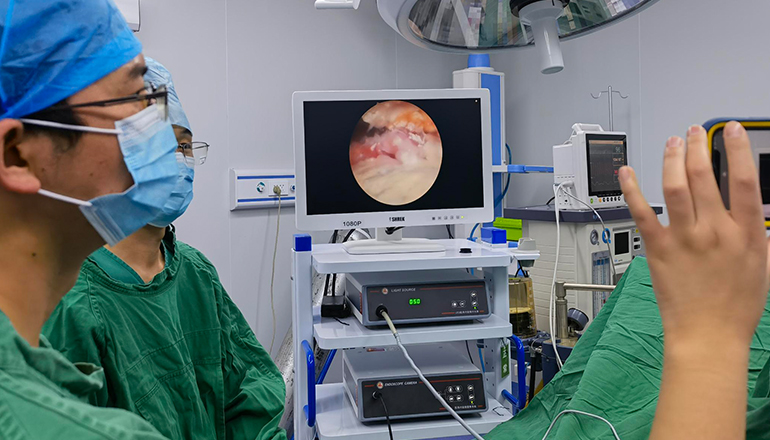- Shanghai, China
- [email protected]
- +86-21-58189111
Meniscus root tears are a common problem in the knee joint that can lead to significant pain, instability, and eventual joint degeneration if not treated properly. In recent years, there has been an increasing interest in repairing the meniscus root instead of removing the damaged tissue, as this has been shown to provide better long-term outcomes and preserve joint function. Arthroscopic meniscus root repair is a minimally invasive technique that has been developed to address this problem.
The meniscus is a crescent-shaped structure that acts as a cushion between the femur and tibia bones in the knee joint. It has two roots that attach it to the bone, one at the front (anterior) and one at the back (posterior) of the joint. Meniscus root tears can occur when these attachments are disrupted, leading to a loss of stability and function of the meniscus.
The arthroscopic meniscus root repair technique involves making several small incisions around the knee joint and inserting a small camera called an arthroscope. This allows the surgeon to see inside the joint and identify the tear. A small drill is then used to create a hole in the bone at the site of the root attachment. Sutures are then passed through the hole and through the meniscus to reattach it to the bone.

There are different methods for passing the sutures through the meniscus, including the all-inside, inside-out, and outside-in techniques. The all-inside technique uses special instruments to place the sutures inside the joint without the need for a separate incision. The inside-out technique involves passing a needle through the joint and pulling the suture through the meniscus from the inside to the outside. The outside-in technique involves passing a needle from the outside of the joint through the meniscus and then back out again, pulling the suture with it.
Once the meniscus is reattached to the bone, the incisions are closed and the knee is immobilized in a brace or cast to protect the repair site. Physical therapy is then initiated to restore range of motion, strength, and function of the knee joint.
Arthroscopic meniscus root repair has been shown to provide good to excellent outcomes in the majority of cases. It is a safe and effective technique that can preserve joint function and prevent the need for more invasive procedures such as knee replacement surgery. However, not all meniscus root tears are amenable to repair, and the decision to proceed with this procedure should be made on a case-by-case basis after careful evaluation by an experienced orthopedic surgeon.
In summary, arthroscopic meniscus root repair is a minimally invasive technique that can provide a better outcome than meniscectomy in patients with meniscus root tears. The technique involves the use of arthroscopic instruments to pass sutures through the meniscus and reattach it to the bone. It is a safe and effective procedure that can preserve joint function and prevent further joint degeneration. However, it should be noted that not all meniscus root tears can be repaired using this technique, and the decision to proceed with this procedure should be made on a case-by-case basis by an experienced orthopedic surgeon. With proper evaluation and careful consideration, arthroscopic meniscus root repair can be an excellent option for patients suffering from meniscus root tears.
Leave a Comments